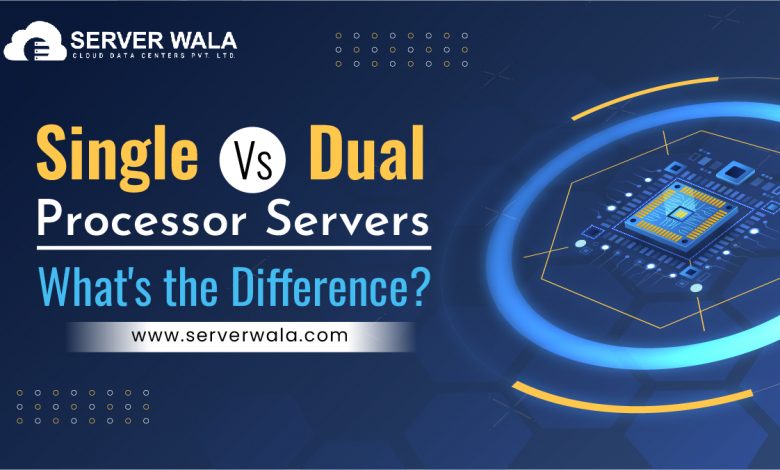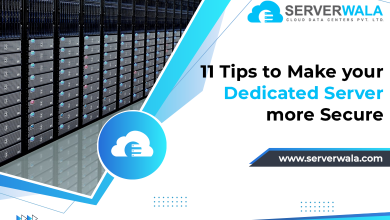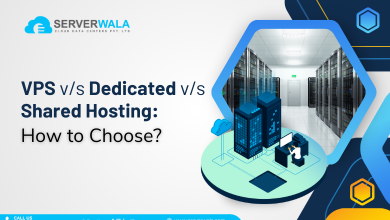Single vs Dual Processor Servers: What’s the Difference?

The growing influence of technology and the rise of artificial intelligence, has resulted in high demand for superfast server processors. When it comes to choosing the right server processor one crucial decision that needs to be taken is choosing amongst a Single vs a Dual Processor Server. There is a huge difference in the level of performance, functionality, and pricing of the dual cpu server and single cpu servers.
In order to meet your requirements, you must determine the server configuration.
In addition to the number and type of CPUs that power a server, the backbone consists of the number of CPUs. As you proceed, you will need to add the Memory, Storage, and other options necessary to meet your use case.
The information in this article should help you distinguish between a single-processor server and a dual-processor server. With the information provided here, you should be able to make an informed decision about which processor is best for the server, and your future infrastructure requirements.
Comparison of Single-processor Servers and Dual-processor Servers
Understand what a CPU, Core, and Thread are. We didn’t even know what a multi-core processor was when computers began entering our daily lives. We had high-speed CPUs. CPUs could process more information the faster they were clocked.
When manufacturers realized that single-core CPUs were no longer sufficient, they began developing multicore and multithreaded chips. Soon enough, multiple CPUs were installed on one motherboard. How do CPUs, cores, and threads differ between single processor vs dual-processor server? Read on for more information.
Single Processor Server: Benefits, Uses, and more
On a single processor server, there is only one CPU socket on the motherboard. A server’s maximum core count is determined by the most powerful CPU on the market. The good news is that the market today offers many high-performance units capable of handling intensive workloads.
Intel® Xeon® Scalable Processors are the most powerful chips, with a maximum of 28 cores and 56 threads. It is almost exclusively multiprocessor setups that utilize Intel® Xeon® Scalable Processors.
Intel® Xeon® E processors, the descendants of the Xeon E3 family, are used in many recent single-processor servers. From the latest Coffee Lake product line, the Intel® Xeon® E-2186G CPU is the most cost-effective choice. A 128GB ECC RAM and 6 cores clocked at 3.8 GHz (4.7 GHz Turbo Boost) allow you to run multiple different services 24/7 (with a bios update, coming in the first quarter).
Single-processor server setups received numerous improvements in performance, security, and reliability with the Intel® Xeon® E-2100 processors. Despite this, the RAM capacity constraint of single CPU configurations remains one of their most significant disadvantages.
Dual Processor Servers – Benefits and Facts
Single-processor servers have one CPU socket, while dual-processor servers have two.
Additionally, both cache memory and RAM slots are separated by two sets of PCI LANs, leading to a vast amount of PCI LANs. There are 24 memory slots on a motherboard, 12 of which belong to a first CPU and 12 to a second CPU. When only one CPU slot is occupied, the remaining RAM sticks cannot be used. However, this rarely occurs since servers with dual processors will always have both slots occupied. Dual processor setups using Intel® Xeon® Gold Processors are the most economical option. If you need more cache and higher clock speeds, you can choose Intel® Xeon® Gold 5118 or Intel® Xeon® Gold 6130.
Due to the presence of a necessary latency in dual-processor systems, dual-processor servers should be considered. Specifically, dual-processor servers are required when computing the same datasets. NUMA (non-uniform memory access) is necessary to avoid interruptions between the available resources and to efficiently share them. In this way, memory and devices can be assigned to each CPU in order to reduce latency time. However, this does not affect workloads designed for these servers.
Space-constrained environments are best suited for dual-processor servers and multiprocessor systems. Whenever a business needs a large amount of computing power packed into a constrained space, multi-socket setups are used.
Performance Comparison: Single vs. Dual Processor Servers
The more the better, as is usually the case. Servers with more cores perform better than those with six or eight cores and a single CPU chip. There are, however, exceptions.
Even with dual CPU setups packing enormous core counts and outperforming single processor servers by a wide margin, some tests have shown only a marginal performance boost compared to single CPU configurations with similar core counts and clock speeds per chip. There was a situation where two CPUs worked on the same data simultaneously.
Dual processor servers, however, deliver immense performance gains when the workload is optimized for these setups. When CPUs run multi-threaded tasks that are intensive, this is especially true. One of them is abstracting the resources into virtual machines that work on different tasks simultaneously.
It is not always detrimental to have a high processor speed or a high core count. The maximum amount of RAM supported by dual-processor servers is greater than what can be supported by single-processor servers. The maximum memory size for Intel’s Xeon® Gold 5118 Scalable Processor is 768GB. A BIOS update enables Xeon E-2100 processors to support 128GB of RAM.
To demonstrate the importance of multiprocessor servers, Intel® OptaneTM DC Persistent Memory will be available in the first half of 2019 for Cascade Lake Xeon Scalable Processors. Low latency memory of this type falls right in between NvME, SATA, and SSD. Performance for data-hungry applications will be enhanced with the new kind of memory while security will be maintained.
Also Read: Guide to Dedicated Server: Types and Use Cases for 2024
Conclusion
Single-processor servers dominate today’s market. Due to massive core counts in CPU chips, dual-processor servers may seem to be best suited to enterprise environments and data centers. For space savings, these buildings should house as many cores per unit as possible.
Scientific research and development are advanced with the help of high-performance servers. For this reason, choosing the correct server is essential. It is a good idea to seek the help of professionals if you need any assistance in making this decision. Serverwala experts can also assist you in choosing the right server for your workload.




